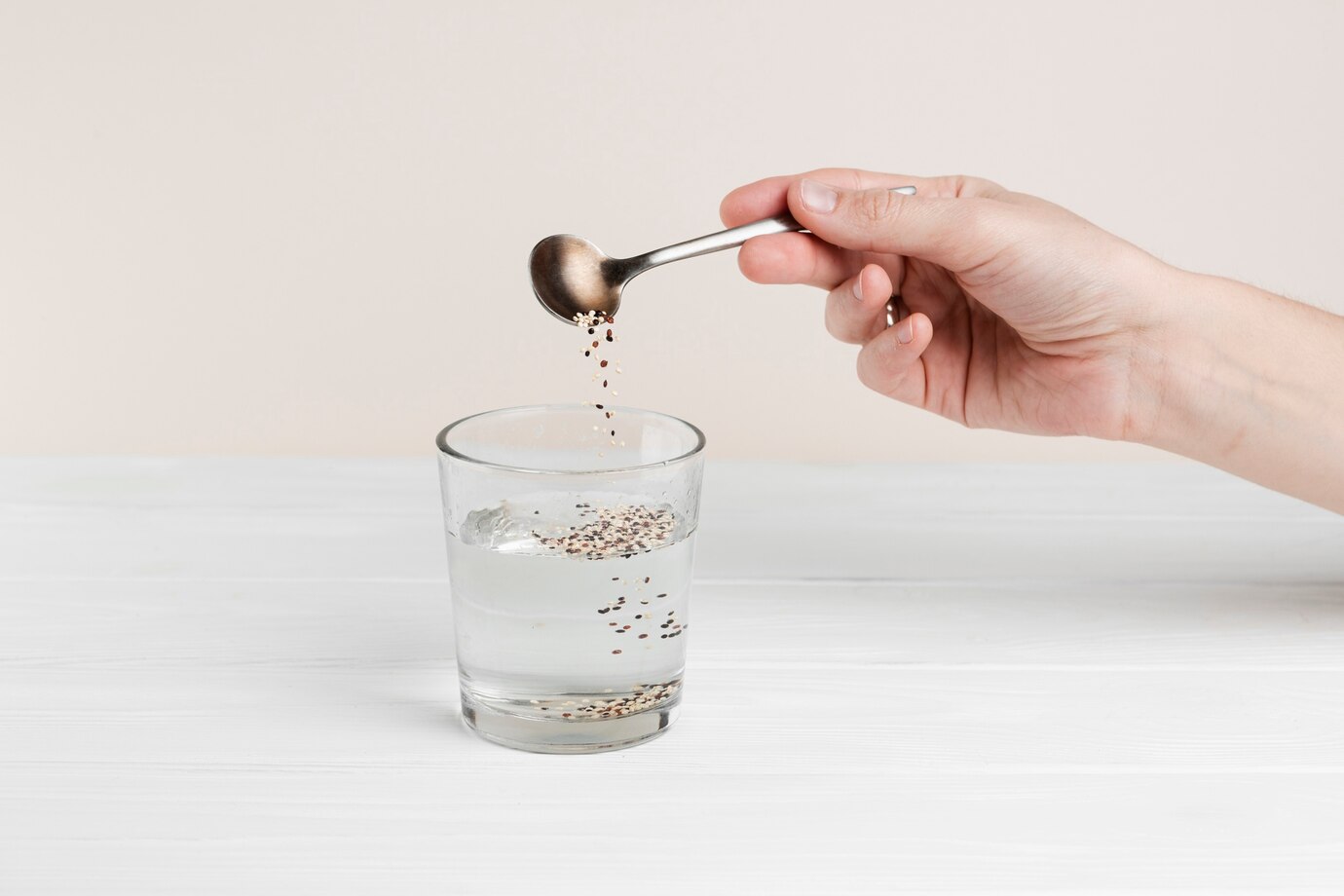Chia seed water is a refreshing, nutrient-packed drink that’s easy to make and offers numerous health benefits. Whether you’re looking to boost hydration, improve digestion, or add more omega-3s to your diet, chia seed water is a fantastic choice.
In this guide, you’ll learn:
✅ The benefits of chia seed water
✅ Step-by-step instructions for making it
✅ Tips for enhancing flavor and texture
✅ Common mistakes to avoid
✅ How to incorporate it into your daily routine
Why Drink Chia Seed Water?
Chia seeds are tiny but mighty, packed with fiber, protein, omega-3 fatty acids, and essential minerals like calcium and magnesium. When soaked in water, they form a gel-like consistency that helps with:
✔ Hydration – Retains water to keep you hydrated longer.
✔ Digestion – High fiber content supports gut health.
✔ Energy Boost – Slow-releasing carbs provide sustained energy.
✔ Weight Management – Keeps you full, reducing cravings.
✔ Heart Health – Omega-3s help lower bad cholesterol.
How to Make Chia Seed Water (Basic Recipe)
Ingredients:
-
1 tbsp chia seeds
-
1 cup (240ml) water (or coconut water for extra electrolytes)
-
Optional: Lemon juice, honey, or fruit for flavor
Instructions:
-
Soak the Chia Seeds
-
Add 1 tbsp of chia seeds to a glass of water.
-
Stir immediately to prevent clumping.
-
-
Let It Rest
-
Wait 10-15 minutes (or up to 30 minutes for a thicker consistency).
-
Stir occasionally to break up any gel clusters.
-
-
Add Flavor (Optional)
-
Mix in lemon, lime, honey, or fresh fruit like berries.
-
-
Enjoy!
-
Drink as is or refrigerate for a chilled version.
-
5 Delicious Variations of Chia Seed Water
1. Lemon & Honey Chia Water
-
Add 1 tsp honey + ½ lemon juice for a detoxifying drink.
2. Coconut Chia Fresca
-
Use coconut water instead of plain water for natural sweetness.
3. Berry Blast Chia Water
-
Muddle strawberries or blueberries before adding chia seeds.
4. Minty Green Chia Water
-
Add fresh mint leaves and cucumber slices for a refreshing twist.
5. Spiced Turmeric Chia Water
-
Mix in a pinch of turmeric and black pepper for anti-inflammatory benefits.
Expert Tips for the Best Chia Seed Water
🔹 Use the Right Ratio – Too many chia seeds can make the drink too thick. Stick to 1 tbsp per cup of liquid.
🔹 Stir Well – Prevents clumping for a smooth texture.
🔹 Soak Long Enough – At least 10 minutes for optimal gel formation.
🔹 Store Properly – Keep in the fridge for up to 2 days (shake before drinking).
🔹 Experiment with Liquids – Try almond milk, herbal tea, or fruit-infused water.
Common Mistakes to Avoid
❌ Not Stirring Immediately → Seeds clump at the bottom.
❌ Using Too Many Seeds → Results in a pudding-like texture.
❌ Not Soaking Long Enough → Seeds remain hard and difficult to digest.
❌ Adding Sweeteners Too Early → Can hinder proper soaking.
Final Thoughts
Chia seed water is an effortless way to boost your nutrient intake while staying hydrated. With endless flavor possibilities and proven health benefits, it’s a drink worth adding to your daily routine.
Try it today and experience the difference!
FAQs
1. Can I drink chia seed water every day?
Yes! It’s a great daily hydration booster—just stay within 1-2 tbsp of chia seeds per day.
2. Does chia seed water help with weight loss?
Its high fiber content promotes fullness, which may reduce calorie intake.
3. Can I make chia water overnight?
Absolutely! Soaking chia seeds overnight in the fridge creates a thicker, ready-to-drink gel.
4. Is chia seed water good for digestion?
Yes, the soluble fiber helps regulate bowel movements and supports gut health.
5. Can I use ground chia seeds?
Yes, but they absorb liquid faster—adjust soaking time accordingly.










